Tiếng anh giao tiếp online
Giải đề IELTS Reading: The fashion industry [full answers]
Mục lục [Ẩn]
Trong quá trình luyện IELTS Reading, việc thực hành với các đề thi thật là phương pháp hiệu quả để cải thiện band điểm nhanh chóng. Bài viết này sẽ hướng dẫn bạn chinh phục trọn vẹn đề IELTS Reading “The fashion industry”, bao gồm đề bài, hệ thống câu hỏi, đáp án kèm phân tích chi tiết và dễ hiểu. Đây chắc chắn sẽ là nguồn tài liệu hữu ích giúp bạn rèn luyện kỹ năng Reading và tiến gần hơn tới band điểm mong muốn trong kỳ thi IELTS.
1. Đề thi thật IELTS Reading “A brief history of humans and food”
Reading passage 2
The fashion industry
- The fashion industry is a multibillion-dollar global enterprise devoted to the business of making and selling clothes. It encompasses all types of garments, from designer fashions to ordinary everyday clothing. Because data on the industry are typically reported for national economies, and expressed in terms of its many separate sectors, total figures for world production of textiles and clothing are difficult to obtain. However, by any measure, the industry accounts for a significant share of world economic output.
- The fashion industry is a product of the modern age. Prior to the mid-19th century, virtually all clothing was handmade for individuals, either as home production or on order from dressmakers and tailors. By the beginning of the 20th century, with the development of new technologies such as the sewing machine, the development of the factory system of production, and the growth of department stores and other retail outlets, clothing had increasingly come to be mass-produced in standard sizes and sold at fixed prices. Although the fashion industry developed first in Europe, today it is highly globalized, with garments often designed in one country, manufactured in another, and sold in a third. For example, an American fashion company might source fabric in China and have the clothes manufactured in Vietnam, finished in Italy, and shipped to a warehouse in the United States for distribution to retail outlets internationally.
- One of the first accomplishments of the Industrial Revolution in the 18th century was the partial automation of the spinning and weaving of wool, cotton, silk, and other natural fibres. Today, these processes are highly automated and carried out by computer-controlled, high-speed machinery, and fabrics made from both natural fibres and synthetic fibres (such as nylon, acrylic, and polyester) are produced. A growing interest in sustainable fashion (or eco-fashion) has led to greater use of environmentally friendly fibres, such as hemp. In addition, high-tech synthetic fabrics confer such properties as moisture absorption, stain resistance, retention or dissipation of body heat, and protection against fire, weapons, cold, ultraviolet radiation, and other hazards. Fabrics are also produced with a wide range of visual effects through dyeing, weaving, printing, and other processes. Together with fashion forecasters, fabric manufacturers work well in advance of the clothing production cycle to create fabrics with colours, textures, and other qualities that anticipate consumer demand.
- Historically, very few fashion designers have become famous brands such as Coco Chanel or Calvin Klein, who have been responsible for prestigious high-fashion collections. These designers are influential in the fashion world, but, contrary to popular belief, they do not dictate new fashions; rather, they endeavour to design clothes that will meet consumer demand. The vast majority of designers work in anonymity for manufacturers, as part of design teams, adapting designs into marketable garments for average consumers. They draw inspiration from a wide range of sources, including film and television costumes, street clothing, and active sportswear.
- An important stage in garment production is the translation of the clothing design into templates, in a range of sizes, for cutting the cloth. Because the proportions of the human body change with increases or decreases in weight, templates cannot simply be scaled up or down. Template making was traditionally a highly skilled profession. Today, despite innovations in computer programming, designs in larger sizes are difficult to adjust for every body shape. Whatever the size, the template—whether drawn on paper or programmed as a set of computer instructions—determines how fabric is cut into the pieces that will be joined to make a garment. For all but the most expensive clothing, fabric cutting is accomplished by computer-guided knives or high-intensity lasers that can cut many layers of fabric at once.
- The next stage of production is the assembly process. Some companies use their own production facilities for some or all of the manufacturing process, but the majority rely on separately owned manufacturing firms or contractors to produce garments to their specifications. In the field of women's clothing, manufacturers typically produce several product lines a year, which they deliver to retailers on predetermined dates. Technological innovation, including the development of computer-guided machinery, has resulted in the automation of some stages of assembly. Nevertheless, the fundamental process of sewing remains labour-intensive. In the late 20th century, China emerged as the world's largest producer of clothing because of its low labour costs and highly disciplined workforce.
- For much of the period following World War II, trade in textiles and garments was strictly regulated by purchasing countries, which imposed quotas and tariffs. Since the 1980s, these protectionist measures, which were intended (ultimately without success) to prevent textile and clothing production from moving from high-wage to low-wage countries, have gradually been abandoned. They have been replaced by a free-trade approach, under the regulatory control of global organisations. The advent of metal shipping containers and relatively inexpensive air freight have also made it possible for production to be closely tied to market conditions, even across globe-spanning distances.
Questions 14-20
Reading Passage 2 has seven sections, A-G.
Choose the correct heading for each section from the list of headings below. Write the correct number, in boxes 14-20 on your answer sheet.
List of Heading
i. The automation of material production
ii. Producing materials with a range of features
iii. Factors affecting international commerce
iv. Making patterns for people with different body shapes
v. The traditional methods of fashion design
vi. How clothes were made before industrialization
vii. The impact of technological advances on mass production
viii. The globalization of garment manufacture
List of Sections
- Section A
- Section B
- Section C
- Section D
- Section E
- Section F
- Section G
Questions 21-24
Complete the summary below.
Choose NO MORE THAN TWO WORDS from the passage for each answer. Write your answers in boxes 21-24 on your answer sheet.
The development of a modern fashion industry
Up until the middle of the 19th century, people generally wore handmade clothes. After that, the situation changed, and by the 20th century, many clothes were mass-produced. This development was partly due to inventions like the 21……….. It was also the result of general changes in manufacturing systems, as well as the spread of shops like 22……….. The changes also led to the standardization of sizes and the fact that the fashion industry originated in 23…………..
Questions 25 and 26
Choose TWO letters, A-E.
Write the correct letters in boxes 25 and 26 on your answer sheet.
Which TWO of the following statements does the writer make about garment assembly?
- The majority of sewing is done by computer-operated machines.
- Highly skilled workers are the most important requirement.
- Most businesses use other companies to manufacture their products.
- Fasteners and labels are attached after the clothes have been made up.
- Manufacturers usually produce one range of women’s clothing annually.
Nguồn: Internet
>> Xem thêm:
- Giải đề IELTS Reading: Computer Games [Full answers]
- Giải đề IELTS Reading: Stepwells [Full answers]
2. Đáp án đề IELTS Reading “The fashion industry”

- Sau đây là bảng đáp án để bạn đối chiếu:
|
Questions |
Answers |
|
14 |
v |
|
15 |
i |
|
16 |
iv |
|
17 |
vii |
|
18 |
viii |
|
19 |
ii |
|
20 |
vi |
|
21 |
sewing machine |
|
22 |
department stores |
|
23 |
prices |
|
24 |
Europe |
|
25 |
C |
|
26 |
D |
- Giải thích đáp án câu 14 - 20: Matching headings
Câu 14: v (The traditional methods of fashion design)
Ở đoạn A, bài đọc mô tả tổng quan về ngành thời trang, nhấn mạnh rằng đây là một ngành lớn trong nền kinh tế toàn cầu. Tuy nhiên, chi tiết quan trọng là đoạn mở đầu cho thấy khái niệm truyền thống về thiết kế và sản xuất thời trang trước khi công nghiệp hoá: “It encompasses all types of garments, from designer fashions to ordinary everyday clothing.” Do đó, tiêu đề phù hợp nhất chính là “The traditional methods of fashion design”.
Câu 15: i (The automation of material production)
Trong đoạn B, tác giả trình bày sự thay đổi khi xuất hiện các công nghệ như sewing machine và hệ thống nhà máy. Những cải tiến này đã giúp tự động hóa nhiều khâu trong quá trình sản xuất. Chính vì vậy, tiêu đề “The automation of material production” là lựa chọn đúng.
Câu 16: iv (Making patterns for people with different body shapes)
Đoạn C nói về việc tạo ra mẫu rập (templates) cho nhiều kích cỡ khác nhau. Tác giả nhấn mạnh rằng “Because the proportions of the human body change with increases or decreases in weight, templates cannot simply be scaled up or down.” Điều này cho thấy khó khăn trong việc làm mẫu cho các dáng người khác nhau → đáp án đúng là “Making patterns for people with different body shapes”.
Câu 17: vii (The impact of technological advances on mass production)
Đoạn D giải thích rằng các nhà thiết kế nổi tiếng không hẳn quyết định xu hướng, mà họ thiết kế dựa trên nhu cầu khách hàng. Quan trọng hơn, đoạn này còn nêu sự ảnh hưởng của công nghệ và sản xuất hàng loạt trong ngành thời trang hiện đại. Vì vậy, đáp án chính xác là “The impact of technological advances on mass production”.
Câu 18: viii (The globalization of garment manufacture)
Đoạn E tập trung vào quá trình toàn cầu hóa trong ngành thời trang. Một ví dụ cụ thể được đưa ra: “an American fashion company might source fabric in China and have the clothes manufactured in Vietnam, finished in Italy, and shipped to the United States.” Điều này chứng minh rõ ràng sự toàn cầu hóa của ngành may mặc → đáp án là “The globalization of garment manufacture”.
Câu 19: ii (Producing materials with a range of features)
Trong đoạn F, bài đọc mô tả các loại vải có nhiều đặc tính như chống tia UV, chống cháy, giữ nhiệt hoặc tản nhiệt. Bên cạnh đó, các công nghệ như nhuộm, dệt, in cũng tạo ra hiệu ứng đa dạng cho chất liệu. Vì vậy, tiêu đề đúng là “Producing materials with a range of features”.
Câu 20: vi (How clothes were made before industrialization)
Đoạn G quay ngược về lịch sử, cho biết trước thế kỷ 19 hầu hết quần áo đều được may thủ công tại nhà hoặc bởi thợ may. Điều này phản ánh cách thức sản xuất trước khi công nghiệp hoá diễn ra, nên đáp án chính xác là “How clothes were made before industrialization”.
- Giải thích đáp án câu 21 - 24: Complete the sentences
Câu 21: sewing machine
Trong phần tóm tắt, bài viết nói: “By the beginning of the 20th century, with the development of new technologies such as the sewing machine…” → rõ ràng “sewing machine” là phát minh quan trọng thúc đẩy ngành thời trang hiện đại.
Câu 22: department stores
Câu văn: “…and the growth of department stores and other retail outlets, clothing had increasingly come to be mass-produced…” → sự phát triển của department stores là yếu tố thúc đẩy quá trình sản xuất hàng loạt.
Câu 23: Europe
Trong đoạn B có nêu rõ: “Although the fashion industry developed first in Europe…” → vì vậy nơi khởi nguồn ngành thời trang hiện đại chính là Europe.
Câu 24: prices
Đoạn B cũng khẳng định: “sold at fixed prices” → nghĩa là quần áo được bán theo giá cố định, nên từ cần điền là prices.
- Giải thích đáp án câu 25 - 26: Choose the correct statements
Câu 25: C
Trong đoạn F: “the majority rely on separately owned manufacturing firms or contractors to produce garments to their specifications.” → hầu hết doanh nghiệp thuê công ty khác sản xuất theo yêu cầu. Do đó, lựa chọn C là đúng.
Câu 26: D
Cũng ở đoạn F: “…manufacturers typically produce several product lines a year, which they deliver to retailers on predetermined dates.” Đồng thời, có chi tiết về quá trình gắn nhãn, phụ kiện sau khi quần áo đã hoàn thiện. Điều này khớp với lựa chọn D.
>> Xem thêm:
- Những sai lầm khi luyện IELTS Reading cần tránh và cách khắc phục
- Download miễn phí tài liệu luyện IELTS
3. Từ vựng quan trọng trong bài IELTS Reading “The fashion industry”

Trong quá trình ôn luyện IELTS Reading, việc trau dồi vốn từ vựng IELTS đều đặn và có chiến lược là yếu tố then chốt, đặc biệt khi bạn thực hành với đề thi mẫu. Danh sách dưới đây tổng hợp những từ/cụm từ quan trọng từ bài IELTS Reading “The fashion industry”, bao gồm cả thuật ngữ chuyên ngành và những từ có khả năng xuất hiện lặp lại trong nhiều đề Reading khác.
|
Từ vựng |
Dịch nghĩa |
Ví dụ trong bài |
|
enterprise |
doanh nghiệp |
The fashion industry is a multibillion-dollar global enterprise devoted to the business of making and selling clothes. |
|
garments |
quần áo |
It encompasses all types of garments, from designer fashions to ordinary everyday clothing. |
|
output |
sản lượng |
However, by any measure, the industry accounts for a significant share of world economic output. |
|
mass-produced |
sản xuất hàng loạt |
By the beginning of the 20th century... clothing had increasingly come to be mass-produced in standard sizes and sold at fixed prices. |
|
retail outlets |
cửa hàng bán lẻ |
By the beginning of the 20th century... and the growth of department stores and other retail outlets, clothing had increasingly come to be mass-produced. |
|
synthetic fibres |
sợi tổng hợp |
Today, these processes are highly automated... and fabrics made from both natural fibres and synthetic fibres (such as nylon, acrylic, and polyester) are produced. |
|
sustainable fashion |
thời trang bền vững |
A growing interest in sustainable fashion (or eco-fashion) has led to greater use of environmentally friendly fibres, such as hemp. |
|
moisture absorption |
khả năng thấm hút ẩm |
In addition, high-tech synthetic fabrics confer such properties as moisture absorption... |
|
stain resistance |
khả năng chống vết bẩn |
In addition, high-tech synthetic fabrics confer such properties as... stain resistance... |
|
dissipation |
sự tản nhiệt |
In addition, high-tech synthetic fabrics confer such properties as... retention or dissipation of body heat... |
|
prestigious |
danh giá |
Historically, very few fashion designers have become famous brands such as Coco Chanel or Calvin Klein, who have been responsible for prestigious high-fashion collections. |
|
anonymity |
sự ẩn danh |
The vast majority of designers work in anonymity for manufacturers... |
|
templates |
mẫu rập |
An important stage in garment production is the translation of the clothing design into templates, in a range of sizes, for cutting the cloth. |
|
proportions |
tỷ lệ |
Because the proportions of the human body change with increases or decreases in weight, templates cannot simply be scaled up or down. |
|
computer-guided knives |
dao điều khiển bằng máy tính |
For all but the most expensive clothing, fabric cutting is accomplished by computer-guided knives or high-intensity lasers... |
|
labour-intensive |
tốn nhiều lao động |
Nevertheless, the fundamental process of sewing remains labour-intensive. |
|
quotas |
hạn ngạch |
For much of the period following World War II, trade in textiles and garments was strictly regulated... which imposed quotas and tariffs. |
|
tariffs |
thuế quan |
For much of the period following World War II, trade in textiles and garments was strictly regulated... which imposed quotas and tariffs. |
|
protectionist measures |
biện pháp bảo hộ |
Since the 1980s, these protectionist measures... have gradually been abandoned. |
|
free-trade |
tự do thương mại |
They have been replaced by a free-trade approach, under the regulatory control of global organisations. |
>> Xem thêm:
- Top 10 sách học từ vựng IELTS hay và hiệu quả nhất cho người mới
- Top 10 App Học Từ Vựng IELTS Miễn Phí Cho Người Mới Bắt Đầu
4. Chinh phục kỳ thi IELTS cùng khóa học online của Langmaster
Trong hành trình ôn luyện IELTS Reading, nhiều bạn thường gặp khó khăn không chỉ ở tốc độ làm bài mà còn ở việc hệ thống lại chiến lược đọc hiểu một cách khoa học. Để khắc phục điều này, bạn cần có sự đồng hành từ một chương trình học rõ ràng và đội ngũ giảng viên có kinh nghiệm thực chiến, những người có thể giúp bạn tiết kiệm thời gian và nhanh chóng đạt kết quả mong muốn. Đây chính là lúc một khóa học IELTS online uy tín trở thành giải pháp tối ưu để bạn rèn luyện hiệu quả và bứt phá band điểm.
Với hơn 16 năm kinh nghiệm giảng dạy tiếng Anh, Langmaster mang đến các khóa học IELTS online được thiết kế phù hợp với từng mục tiêu và năng lực đầu vào của học viên. Chính những ưu điểm nổi bật dưới đây đã giúp khóa học của Langmaster trở thành lựa chọn đáng tin cậy cho những ai muốn chinh phục IELTS một cách bền vững:
- Sĩ số lớp nhỏ (7 – 10 học viên): Giúp mỗi học viên có nhiều cơ hội trao đổi trực tiếp với giảng viên, được chữa bài chi tiết và tiến bộ đồng đều.
- Lộ trình cá nhân hóa: Được xây dựng dựa trên bài đánh giá năng lực đầu vào và có báo cáo tiến độ hàng tháng, đảm bảo việc học tập đúng hướng.
- Giảng viên 7.5+ IELTS: Có chuyên môn cao và cam kết chấm chữa bài cho học viên trong vòng 24h, đồng hành sát sao để học viên sửa lỗi nhanh chóng.
- Thi thử chuẩn thi thật: Giúp làm quen áp lực phòng thi, đồng thời phân tích rõ điểm mạnh – yếu của học viên để cải thiện hơn.
- Cam kết đầu ra: Khóa học cam kết giúp bạn đạt band điểm mục tiêu, hỗ trợ học lại miễn phí nếu khi thi chưa đạt band.
- Học online linh hoạt: Lịch học dễ sắp xếp, có ghi hình lại buổi học và coaching 1-1 để ôn tập chuyên sâu.
- Hệ sinh thái đồng hành: Kho tài liệu phong phú, bài tập trực tuyến và cố vấn học tập theo sát từng bước.
Đặc biệt, bạn còn có thể tham gia lớp học thử miễn phí tại Langmaster. Với hình thức nhóm nhỏ, lớp học thử giúp bạn trực tiếp trải nghiệm phương pháp giảng dạy và đánh giá mức độ phù hợp của khóa học trước khi đưa ra quyết định đăng ký chính thức.
Kết luận:
Việc phân tích đề thi IELTS Reading “The fashion industry” không chỉ giúp bạn nắm rõ đáp án mà còn hiểu được logic làm bài và cách suy luận hiệu quả cho kỳ thi IELTS. Việc luyện tập thường xuyên với đề thi thật sẽ giúp bạn nâng cao tốc độ đọc, vốn từ vựng và kỹ năng xử lý thông tin. Hãy coi đây là tài liệu ôn tập hữu ích để bạn tự tin chinh phục band điểm mục tiêu trong kỳ thi IELTS Reading.
Nội Dung Hot
KHÓA TIẾNG ANH GIAO TIẾP 1 KÈM 1
- Học và trao đổi trực tiếp 1 thầy 1 trò.
- Giao tiếp liên tục, sửa lỗi kịp thời, bù đắp lỗ hổng ngay lập tức.
- Lộ trình học được thiết kế riêng cho từng học viên.
- Dựa trên mục tiêu, đặc thù từng ngành việc của học viên.
- Học mọi lúc mọi nơi, thời gian linh hoạt.

KHÓA TIẾNG ANH GIAO TIẾP ONLINE
- Học theo nhóm (8-10 người), môi trường học tương tác và giao tiếp liên tục.
- Giáo viên đạt tối thiểu 7.0 IELTS/900 TOEIC.
- Học online chất lượng như offline.
- Chi phí tương đối, chất lượng tuyệt đối.
- Kiểm tra đầu vào, đầu ra và tư vấn lộ trình miễn phí

KHÓA TIẾNG ANH TRẺ EM
- Giáo trình Cambridge kết hợp với Sách giáo khoa của Bộ GD&ĐT hiện hành
- 100% giáo viên đạt chứng chỉ quốc tế IELTS 7.0+/TOEIC 900+
- X3 hiệu quả với các Phương pháp giảng dạy hiện đại
- Lộ trình học cá nhân hóa, con được quan tâm sát sao và phát triển toàn diện 4 kỹ năng
Bài viết khác

Nâng cao trình độ tiếng Anh của bạn với bộ tài liệu miễn phí từ Langmaster! Đăng ký ngay để bắt đầu hành trình chinh phục tiếng Anh!

Kỳ nghỉ hè 2024 sắp kết thúc, thời gian trở lại trường học của các mầm non đất nước ngày càng gần. Vậy lịch đi học lại sau hè 2024 của 63 tỉnh thành là khi nào?

Bạn muốn hiểu rõ hơn về cấu trúc bài thi Cambridge. Hãy đăng ký "Thi Thử Tiếng Anh Cambridge Miễn Phí Tại Langmaster - Nhận Góp Ý Từ Giảng Viên” ngay hôm nay.

Bạn đang có nhu cầu tìm khóa học tiếng Anh giao tiếp cho người lớn tuổi để đi nước ngoài? Tham khảo ngay bài viết dưới đây cùng tiếng Anh giao tiếp Langmaster nhé!

Review top 5+ Khóa học tiếng Anh thương mại cho doanh nghiệp: tham khảo các khóa học tại Langmaster, EIV, Skype English, AROMA, Axcela, Wall Street English,...







 16+ năm kinh nghiệm,
800.000+ học viên
16+ năm kinh nghiệm,
800.000+ học viên


